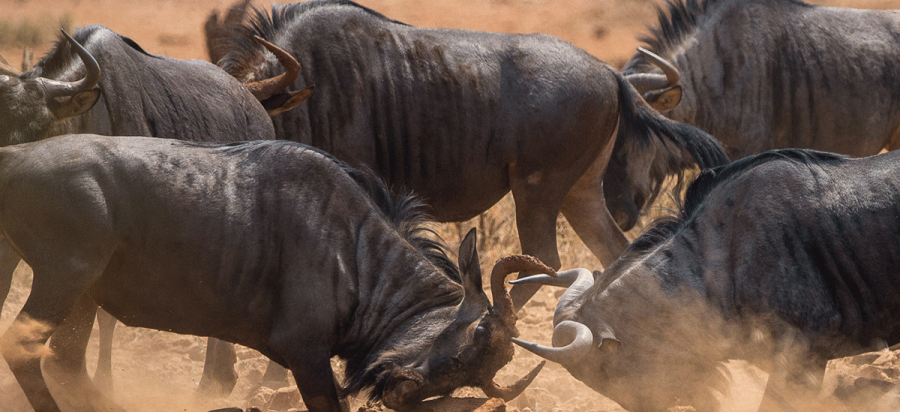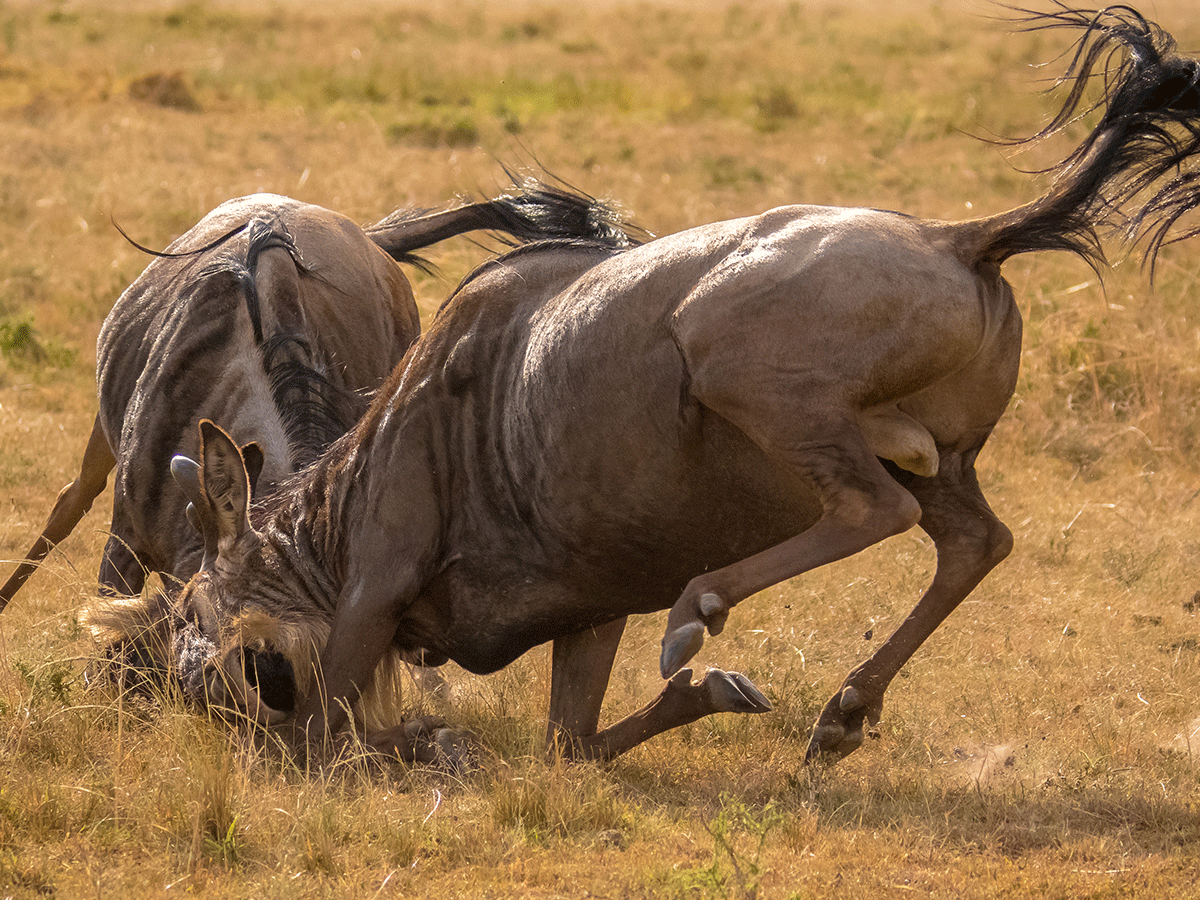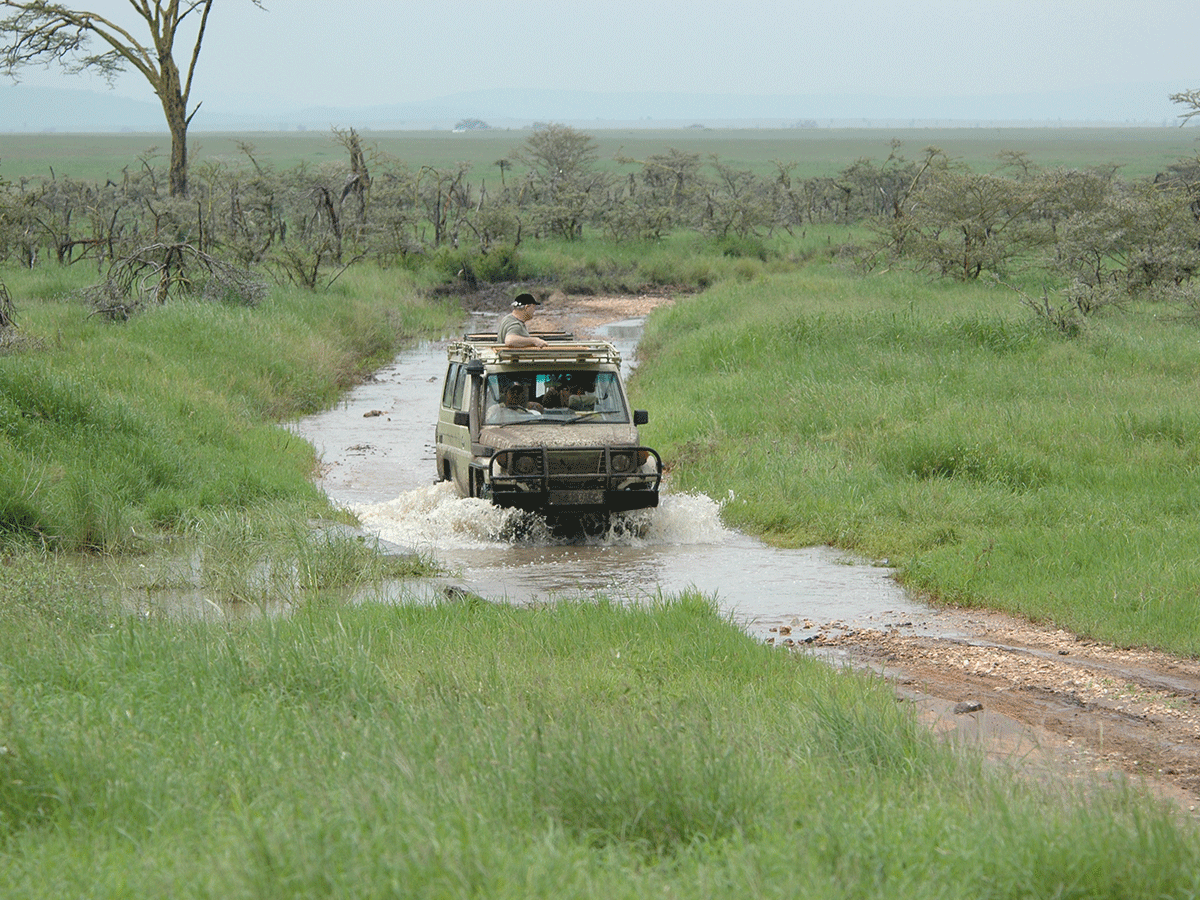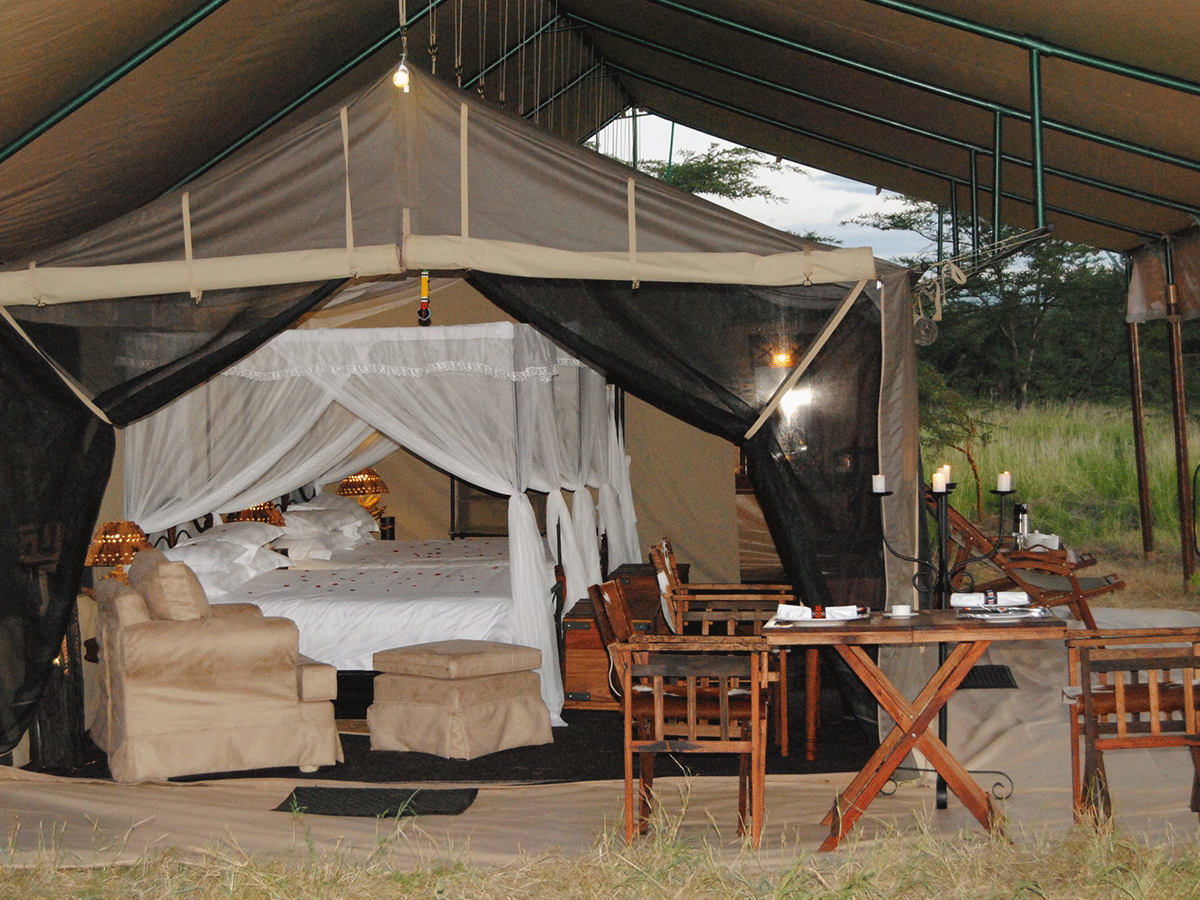Wildebeest rutting season in Serengeti Tanzania
Home » African Safari Destinations » Tanzania Safaris, Tours & Holidays » Wildebeest Rutting Season in Serengeti Tanzania

The Serengeti forms the backdrop to one of the most breathtaking events in the entire animal kingdom – the annual great wildebeest migration. This is actually a year-long search for food by wildebeest, with accompanying herds of zebra and gazelle. The migration usually follows a clockwise direction, but is guided by rain and the growth of grass; at any time the animals can ignore tradition and follow the rain clouds and this has been confirmed by the wildebeest migration hard trackers which have seen the movement of the wildebeest observed from June to May annually across the Serengeti plains and the Masai Mara plains.
What is Rut in the wildebeest?
Rut in wildebeest is an annual period of sexual activity in wildebeest and some other animals like the Zebras during which the males fight each other for access to the female wildebeest.
May-June Wildebeest rut
May-June is the beginning of the rut season of the wildebeest migration as the herds head north-west past the breathtaking plains of Simba kopjes and Moru kopjes and into the woodlands of the hilly country west of Seronera valley towards the world’s second-largest freshwater the Lake Victoria, This marks the beginning of the annual rut, with thousands of cows mated in less than a month as the herds gather in the woodlands and on the plains of the Serengeti’s Western Corridor. The peak of the rut seems heavily influences by the state of the moon, with the full moon in May/June being a good bet for anyone seeking the most active during this period the males fight aggressively amongst each other as they fight for females.
Seemingly vicious fighting between dominant or territorial males takes place during the rut, though there is generally little actual violence or serious injury. And in spite of these energetic duels, the males have little say over their choice of mates, for it is the females who do the actual choosing.
What happens after the wildebeest rut?
After the matting taking place between May and June most of the cows conceive as the wildebeest make their way through the Grumeti River before arriving at the Mara river before they start their epic journey to cross the highly dangerous brown waters of the Mara River.
How long is the Gestation period of the Wildebeest?
The wildebeest gestation period is between 8-8.5 months, this usually runs from May-June during the beginning of the dry season in Serengeti and run through to January –February when the calving seasons starts again in the Serengeti, this is considered one of the spectacular times of the year to visit the Serengeti for action-packed safari holiday as many predators are attracted like the Lions, cheetah and hyenas whose primary target is the newly born wildebeest calves.
Wildebeest calves are one of the fascinating safari highlights to witness as the newborn calves start to walk few minutes after they are born as one of the adaptations to survive the dangerous predators.
When is the wildebeest calving season in the Serengeti?
Calving usually takes place between January and February of each year. In January the herds begin making their way to the south of the Serengeti after the rains start falling.
By late January and early February, perhaps the greatest spectacle of the Serengeti takes place with the wildebeest calving season. Approximately 8,000 young wildebeest are born every single day during the peak of the Serengeti calving season.
Predators during the wildebeest calving season
During calving season, the Southern Serengeti and Western Ngorongoro Conservation area host the highest concentration of predators in Africa. Lions, hyenas, and cheetahs show up in large numbers to patrol the grasses, waiting for the perfect time to make a kill.
RECOMMENDED SAFARIS
REQUEST ABOUT A TRIP QUOTE NOW
Fill out the form bellow and remember to be precise and detailed in the enquiry entry.



